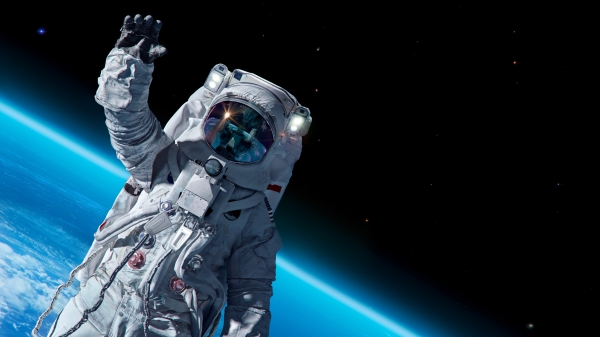The crown jewel: Finding a complete skull for Lucy

Donald Johanson holds a reconstructed skull of the species Australopithecus afarensis. When Johanson discovered the Lucy skeleton on Nov. 24, 1974, it was missing a complete skull. It would take 16 more years to get enough bones from another individual to complete a nearly full skull. Photo by Steve Filmer/ASU
Donald Johanson knows more than anyone else about what he found when he spotted the Lucy fossil skeleton in Ethiopia in 1974. But Johanson probably knows just as much about what he didn’t find on that historic day half a century ago.
The Lucy species, like humans, is symmetrical. So, it’s a straightforward process for scientists to envision missing pieces of a skeleton by what is called mirroring. For example, if you have the right shoulder blade, it’s a safe bet the left shoulder blade will have the same size and shape, just facing the other direction. If you draw an imaginary line down the center of almost any animal, you usually get a mirror image on either side. This technique has allowed modeling of about 40% of Lucy’s full skeleton. But when you get to the head, things get harder.
Lucy at 50 — a year of discovery
Throughout 2024, renowned paleoanthropologist and public scientist Donald Johanson and ASU's Institute of Human Origins have been celebrating the 50th anniversary of the discovery of the fossil skeleton Lucy.
By reflecting on the importance of that discovery, the institute aims to reignite a global interest in how we “became human,” promoting the importance of connecting our human past to the planet's global future.
Learn more at iho.asu.edu/Lucy50.
Johanson is the founding director of the Institute of Human Origins at Arizona State University. When he discovered the Lucy fossil — considered a direct human ancestor — it hit paleoanthropology “like a sledgehammer,” says Ian Tattersall, curator emeritus at the American Museum of Natural History.
“Before Lucy came along,” says Tattersall, “we were mesmerized by an idea of human evolution of being a slow and steady history of linear improvement.”
Lucy changed all that.
She shares body features that connect her to both older hominids and human ancestors. Instead of straight lines, paleoanthropologists would now have to consider human evolution with lineages that might have split and branched in different directions.
“But one of the things that we were missing that is so important is an entire skull,” Johanson says.
That's because skulls are made up of very thin bone and can easily become damaged.
Most specimens of Lucy’s species, Australopithecus afarensis, seem to be just over 3 million years old. Luckily, Johanson and the science of paleoanthropology would only have to wait 16 years to get enough bones to complete a full afarensis skull. The fossil-rich layers of silt around Hadar, the site where he found Lucy, would slowly reveal the bones of more individuals.
“We returned in 1990 under the Hadar Research Project,” Johanson says, “and one of our major goals was to find a skull. Fortunately, a complete skull, a female skull of afarensis, was discovered,” he says.
This skull fossil also dates to about 3 million to 3.1 million years old.
“And it tells us a lot about this creature,” Johanson says. “It had a very projecting face, somewhat ape-like.”
He also says it had a brain size about equal to that of a modern chimpanzee.
“There's a slight increase in brain size but they were still, you know, in many ways the ape that stood up, and an important ancestor to later hominids. And having a cranium or a skull like this is incredibly important for us.”
Spotlighting details of the discovery
This video is part of a monthly series on ASU News leading up the November anniversary of the Lucy discovery.
August: The tiny bone that led to a very big discovery.
September: When art meets science — bringing Lucy to life.
October: The crown jewel: Finding a complete skull for Lucy.
November: Donald Johanson on the momentous discovery and the future of related research.
Explore more: Find more coverage of the anniversary celebration at news.asu.edu/spotlight/lucy-at-50.
More Science and technology

Brilliant move: Mathematician’s latest gambit is new chess AI
Benjamin Franklin wrote a book about chess. Napoleon spent his post-Waterloo years in exile playing the game on St. Helena. John Wayne carried a set and played during downtime while filming “El…

ASU team studying radiation-resistant stem cells that could protect astronauts in space
It’s 2038.A group of NASA astronauts headed for Mars on a six-month scientific mission carry with them personalized stem cell banks. The stem cells can be injected to help ward off the effects of…
Largest genetic chimpanzee study unveils how they’ve adapted to multiple habitats and disease
Chimpanzees are humans' closest living relatives, sharing about 98% of our DNA. Because of this, scientists can learn more about human evolution by studying how chimpanzees adapt to different…